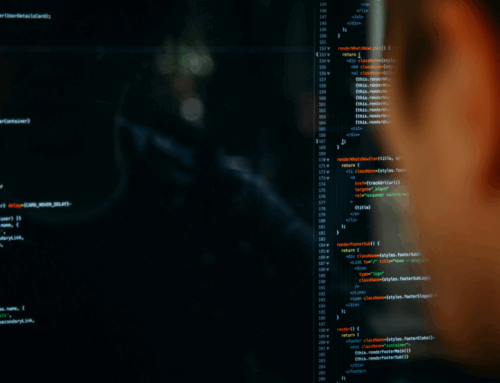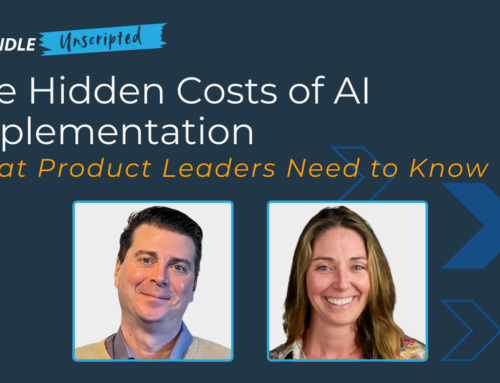In today’s fast-paced tech landscape, the need for app modernization strategies that prioritize agility, scalability, and efficiency has never been more critical. With the pressure to deliver new, innovative features and seamless user experiences, a rebuild of your legacy software product might seem unavoidable – but that can be a critical mistake.
In this episode of Ascendle Unscripted, Jeremy Jackson, Group CTO at ASG, and Dave Todaro, CEO of Ascendle, share lessons learned from failed app modernization projects, and how to set your company up for success. They explore important considerations before committing to a full rebuild, human elements that play a crucial part in successful app modernization efforts, and the role of AI in bringing your product to market.
The Need for App Modernization
For many businesses, legacy applications are the backbone of their operations. However, as these systems age, they often become a hindrance rather than a help, slowing down product updates, increasing maintenance costs, and creating inefficiencies. That’s where app modernization comes in. Modernization is the process of updating legacy systems to meet current business needs, incorporate modern technologies, and enhance user experiences.
But modernization isn’t just about upgrading tech stacks—it involves a complete rethinking of the architecture, design, and development processes to ensure the system can evolve with the business. According to Jeremy Jackson, successful rebuilds require more than just a new tech stack. It’s about having the right people, processes, and strategies in place to get from an outdated system to one that is future-proof.
The Human Element: Why Teams Matter
While AI can drive incredible efficiencies, it cannot replace the human touch that drives the vision, strategy, and day-to-day execution of a rebuild. Both Jeremy Jackson and Dave Todaro highlight that many rebuilds fail not because the technology is flawed, but because the teams involved lack conviction, experience, and the right mix of talent.
Jeremy emphasizes three key components for a successful rebuild:
- High Conviction Leadership: The leader must have a strong belief in the rebuild strategy and the tenacity to pursue it.
- Balanced Team Dynamics: A mix of seasoned veterans who know the current system and newer talent who can help drive the rebuild with fresh insights.
- Strategic Partnerships: Teams need to work with external experts who bring new approaches to development.
Dave echoes this sentiment, noting that the software leader’s involvement doesn’t stop once the decision to rebuild is made. Constant engagement and ruthless prioritization are crucial. He points out that some teams get bogged down in less important tasks, such as endlessly perfecting certain features, without focusing on the real business value that comes with getting your product into users’ hands.
A successful app modernization project requires a team that not only understands the technical side but also aligns with business goals and product requirements. Teams must continue to make strategic decisions based on customer feedback and evolving needs. Without this cohesion, even the most technically sophisticated rebuilds can miss the mark.
How AI is Shaping the Future of App Modernization
AI has revolutionized many areas of software development, and its role in app modernization is no different. With the advent of generative AI, businesses can now move faster, iterate more efficiently, and deliver products that meet user needs with greater precision.
Jeremy believes that AI is drastically lowering the costs and barriers to entry for rebuilding applications. In the past, creating high-fidelity prototypes, building scalable service architectures, and deploying infrastructure would have taken months and required large teams. Today, AI-driven tools like UX Pilot, GitHub Copilot, and AI-powered DevOps tools can accomplish these tasks in a fraction of the time. A complete product cycle—from design to deployment—can now be completed in just a few weeks or even days.
AI tools allow businesses to:
- Accelerate Development: Senior engineers can leverage AI-powered assistants to help with everything from building infrastructure to writing code, all while increasing their velocity.
- Reduce Costs: What once would have required multiple developers and designers can now be completed by a smaller team, with AI handling the repetitive tasks.
- Test and Iterate Quickly: AI can analyze code, user behavior, and data trends, allowing businesses to prioritize the most critical features for their customers based on real-world usage.
While these advancements are game-changers, they also raise concerns about the role of human expertise. Dave points out that AI will take over many routine tasks, but it cannot replace the nuanced decision-making that requires strategic thinking and deep domain knowledge. AI can help software teams be more efficient, but it won’t be able to craft truly innovative products without human direction.
Striking the Balance: Leveraging AI Without Losing Human Expertise
One of the key concerns when integrating AI into software development is how to ensure that teams don’t lose their creative edge or degrade their core skills. Much like pilots need to practice manual landings despite having autopilot systems, software developers must continue to hone their skills even as they use AI tools to accelerate their work.
Jeremy suggests adopting a “train the trainer” model. This approach focuses on developing a deep understanding of both the capabilities and limitations of AI tools. By training developers to use AI responsibly, businesses can ensure that AI complements their expertise rather than replacing it. Regular reviews, peer collaboration, and iterative testing of AI-generated code are essential to maintaining high standards and preventing skill erosion.
For junior developers, it’s important that they still experience traditional coding practices. As Dave notes, AI might be able to generate code for them, but it doesn’t help them learn how to think through complex problems or understand architectural decisions. A balanced approach is necessary, where AI tools handle repetitive tasks while developers continue to focus on the creative and strategic aspects of software development.
Looking Ahead: The Future of App Modernization with AI
The next few years will undoubtedly see app modernization accelerate thanks to AI. However, AI is not a magic bullet. Businesses still need to consider the human, strategic, and technical elements that drive successful app rebuilds. As both Jeremy and Dave agree, the key to success is having the right people at the table, adopting the right processes, and strategically integrating AI tools that complement human expertise.
The future of software development is one of collaboration between humans and machines, with AI handling the grunt work and developers focusing on innovation. By embracing AI while preserving core skills, businesses can create more powerful, efficient, and user-friendly products that set them apart in a competitive market.
Want to get Ascendle Unscripted episodes sent directly to your inbox? Subscribe here!





